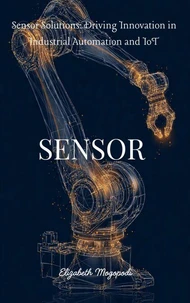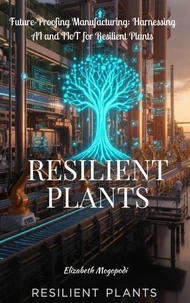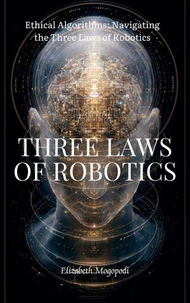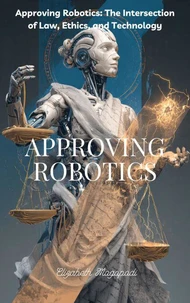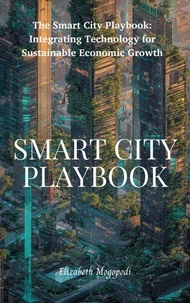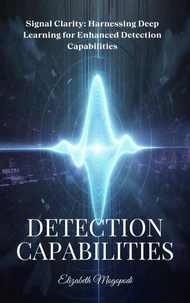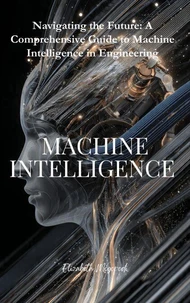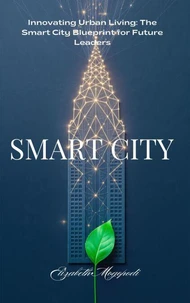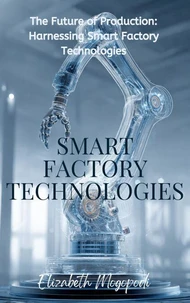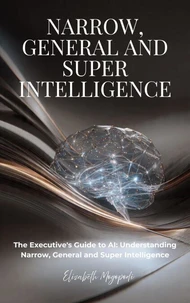Nouveauté
Innovations in MagLev: Engineering the Future of Transportation. ENGINEERING
Par :Formats :
Disponible dans votre compte client Decitre ou Furet du Nord dès validation de votre commande. Le format ePub est :
- Compatible avec une lecture sur My Vivlio (smartphone, tablette, ordinateur)
- Compatible avec une lecture sur liseuses Vivlio
- Pour les liseuses autres que Vivlio, vous devez utiliser le logiciel Adobe Digital Edition. Non compatible avec la lecture sur les liseuses Kindle, Remarkable et Sony
 , qui est-ce ?
, qui est-ce ?Notre partenaire de plateforme de lecture numérique où vous retrouverez l'ensemble de vos ebooks gratuitement
Pour en savoir plus sur nos ebooks, consultez notre aide en ligne ici
- FormatePub
- ISBN8231625857
- EAN9798231625857
- Date de parution22/10/2025
- Protection num.pas de protection
- Infos supplémentairesepub
- ÉditeurWalzone Press
Résumé
Innovations in MagLev: Engineering the Future of TransportationMagnetic levitation (MagLev) is redefining speed, efficiency, and sustainability in global transit. Innovations in MagLev explores the cutting-edge breakthroughs propelling this technology from niche experiments to tomorrow's mainstream. Faster, greener, and smarter: MagLev is the blueprint for the next era of movement. Why MagLev Dominates- Zero Friction: No wheels, no wear.
30% less energy than high-speed rail.- Speed: 500-600 km/h (vs. 320 km/h for bullet trains). Shanghai's line halves travel time.- Silent & Smooth: No noise pollution, minimal vibration.- Safety: Anti-collision systems, earthquake-resistant tracks.- Scalable: Urban loops, intercity networks, even vacuum-tube hyperloops. Key Technological Leaps1. Superconducting Magnets: - Cryogen-free coils (e.g., Japan's SCMagLev) cut costs by 40%. - Next-gen materials (e.g., GdBaCuO) boost lift at higher temps.2.
Advanced Guidance Systems: - AI adjusts levitation gaps (10mm precision) in real time. - Nullify turbulence, reduce power spikes.3. Track Innovations: - Modular "plug-and-play" segments for rapid deployment. - Lightweight concrete + carbon fiber reduces weight by 25%.4. Propulsion: - Linear synchronous motors (LSM) sync with GPS for pinpoint acceleration. - Regenerative braking feeds energy back to grids.
Real-World Applications- Japan: Chuo Shinkansen (Tokyo-Nagoya, 2027). 40% less CO? vs. air travel.- China: Guangzhou-Beijing (1, 300 km, under construction).- Germany: Munich airport loop (operational since 2014).- USA: Proposed LA-SF network (2 hours vs. 6 hours by car). Challenges & Solutions- Cost: Halve expenses via prefab tracks, robotic assembly.- Energy: Solar panels, wind farms power systems; battery backups.- Public Trust: Transparent EIA studies, noise shielding.- Maintenance: Drones inspect; AI predicts faults.
The Future: MagLev 2.0- Hyperloop Integration: Vacuum tubes + MagLev = 1, 000 km/h.- Cargo Pods: Automated freight networks (e.g., ports to cities).- Urban Loops: Elevated "pods" for congestion-free cities.- Space Launch: Offshore MagLev catapults for rocket boosts. Call to Innovate- Engineers: Optimize superconductors, reduce cryogen reliance.- Policymakers: Fund cross-border routes, standardize safety norms.- Communities: Embrace the shift.
Jobs in green tech, tourism, logistics. The magnetic revolution is mid-flight. Adapt, invest, lead. The future isn't waiting-it's accelerating.
30% less energy than high-speed rail.- Speed: 500-600 km/h (vs. 320 km/h for bullet trains). Shanghai's line halves travel time.- Silent & Smooth: No noise pollution, minimal vibration.- Safety: Anti-collision systems, earthquake-resistant tracks.- Scalable: Urban loops, intercity networks, even vacuum-tube hyperloops. Key Technological Leaps1. Superconducting Magnets: - Cryogen-free coils (e.g., Japan's SCMagLev) cut costs by 40%. - Next-gen materials (e.g., GdBaCuO) boost lift at higher temps.2.
Advanced Guidance Systems: - AI adjusts levitation gaps (10mm precision) in real time. - Nullify turbulence, reduce power spikes.3. Track Innovations: - Modular "plug-and-play" segments for rapid deployment. - Lightweight concrete + carbon fiber reduces weight by 25%.4. Propulsion: - Linear synchronous motors (LSM) sync with GPS for pinpoint acceleration. - Regenerative braking feeds energy back to grids.
Real-World Applications- Japan: Chuo Shinkansen (Tokyo-Nagoya, 2027). 40% less CO? vs. air travel.- China: Guangzhou-Beijing (1, 300 km, under construction).- Germany: Munich airport loop (operational since 2014).- USA: Proposed LA-SF network (2 hours vs. 6 hours by car). Challenges & Solutions- Cost: Halve expenses via prefab tracks, robotic assembly.- Energy: Solar panels, wind farms power systems; battery backups.- Public Trust: Transparent EIA studies, noise shielding.- Maintenance: Drones inspect; AI predicts faults.
The Future: MagLev 2.0- Hyperloop Integration: Vacuum tubes + MagLev = 1, 000 km/h.- Cargo Pods: Automated freight networks (e.g., ports to cities).- Urban Loops: Elevated "pods" for congestion-free cities.- Space Launch: Offshore MagLev catapults for rocket boosts. Call to Innovate- Engineers: Optimize superconductors, reduce cryogen reliance.- Policymakers: Fund cross-border routes, standardize safety norms.- Communities: Embrace the shift.
Jobs in green tech, tourism, logistics. The magnetic revolution is mid-flight. Adapt, invest, lead. The future isn't waiting-it's accelerating.
Innovations in MagLev: Engineering the Future of TransportationMagnetic levitation (MagLev) is redefining speed, efficiency, and sustainability in global transit. Innovations in MagLev explores the cutting-edge breakthroughs propelling this technology from niche experiments to tomorrow's mainstream. Faster, greener, and smarter: MagLev is the blueprint for the next era of movement. Why MagLev Dominates- Zero Friction: No wheels, no wear.
30% less energy than high-speed rail.- Speed: 500-600 km/h (vs. 320 km/h for bullet trains). Shanghai's line halves travel time.- Silent & Smooth: No noise pollution, minimal vibration.- Safety: Anti-collision systems, earthquake-resistant tracks.- Scalable: Urban loops, intercity networks, even vacuum-tube hyperloops. Key Technological Leaps1. Superconducting Magnets: - Cryogen-free coils (e.g., Japan's SCMagLev) cut costs by 40%. - Next-gen materials (e.g., GdBaCuO) boost lift at higher temps.2.
Advanced Guidance Systems: - AI adjusts levitation gaps (10mm precision) in real time. - Nullify turbulence, reduce power spikes.3. Track Innovations: - Modular "plug-and-play" segments for rapid deployment. - Lightweight concrete + carbon fiber reduces weight by 25%.4. Propulsion: - Linear synchronous motors (LSM) sync with GPS for pinpoint acceleration. - Regenerative braking feeds energy back to grids.
Real-World Applications- Japan: Chuo Shinkansen (Tokyo-Nagoya, 2027). 40% less CO? vs. air travel.- China: Guangzhou-Beijing (1, 300 km, under construction).- Germany: Munich airport loop (operational since 2014).- USA: Proposed LA-SF network (2 hours vs. 6 hours by car). Challenges & Solutions- Cost: Halve expenses via prefab tracks, robotic assembly.- Energy: Solar panels, wind farms power systems; battery backups.- Public Trust: Transparent EIA studies, noise shielding.- Maintenance: Drones inspect; AI predicts faults.
The Future: MagLev 2.0- Hyperloop Integration: Vacuum tubes + MagLev = 1, 000 km/h.- Cargo Pods: Automated freight networks (e.g., ports to cities).- Urban Loops: Elevated "pods" for congestion-free cities.- Space Launch: Offshore MagLev catapults for rocket boosts. Call to Innovate- Engineers: Optimize superconductors, reduce cryogen reliance.- Policymakers: Fund cross-border routes, standardize safety norms.- Communities: Embrace the shift.
Jobs in green tech, tourism, logistics. The magnetic revolution is mid-flight. Adapt, invest, lead. The future isn't waiting-it's accelerating.
30% less energy than high-speed rail.- Speed: 500-600 km/h (vs. 320 km/h for bullet trains). Shanghai's line halves travel time.- Silent & Smooth: No noise pollution, minimal vibration.- Safety: Anti-collision systems, earthquake-resistant tracks.- Scalable: Urban loops, intercity networks, even vacuum-tube hyperloops. Key Technological Leaps1. Superconducting Magnets: - Cryogen-free coils (e.g., Japan's SCMagLev) cut costs by 40%. - Next-gen materials (e.g., GdBaCuO) boost lift at higher temps.2.
Advanced Guidance Systems: - AI adjusts levitation gaps (10mm precision) in real time. - Nullify turbulence, reduce power spikes.3. Track Innovations: - Modular "plug-and-play" segments for rapid deployment. - Lightweight concrete + carbon fiber reduces weight by 25%.4. Propulsion: - Linear synchronous motors (LSM) sync with GPS for pinpoint acceleration. - Regenerative braking feeds energy back to grids.
Real-World Applications- Japan: Chuo Shinkansen (Tokyo-Nagoya, 2027). 40% less CO? vs. air travel.- China: Guangzhou-Beijing (1, 300 km, under construction).- Germany: Munich airport loop (operational since 2014).- USA: Proposed LA-SF network (2 hours vs. 6 hours by car). Challenges & Solutions- Cost: Halve expenses via prefab tracks, robotic assembly.- Energy: Solar panels, wind farms power systems; battery backups.- Public Trust: Transparent EIA studies, noise shielding.- Maintenance: Drones inspect; AI predicts faults.
The Future: MagLev 2.0- Hyperloop Integration: Vacuum tubes + MagLev = 1, 000 km/h.- Cargo Pods: Automated freight networks (e.g., ports to cities).- Urban Loops: Elevated "pods" for congestion-free cities.- Space Launch: Offshore MagLev catapults for rocket boosts. Call to Innovate- Engineers: Optimize superconductors, reduce cryogen reliance.- Policymakers: Fund cross-border routes, standardize safety norms.- Communities: Embrace the shift.
Jobs in green tech, tourism, logistics. The magnetic revolution is mid-flight. Adapt, invest, lead. The future isn't waiting-it's accelerating.








